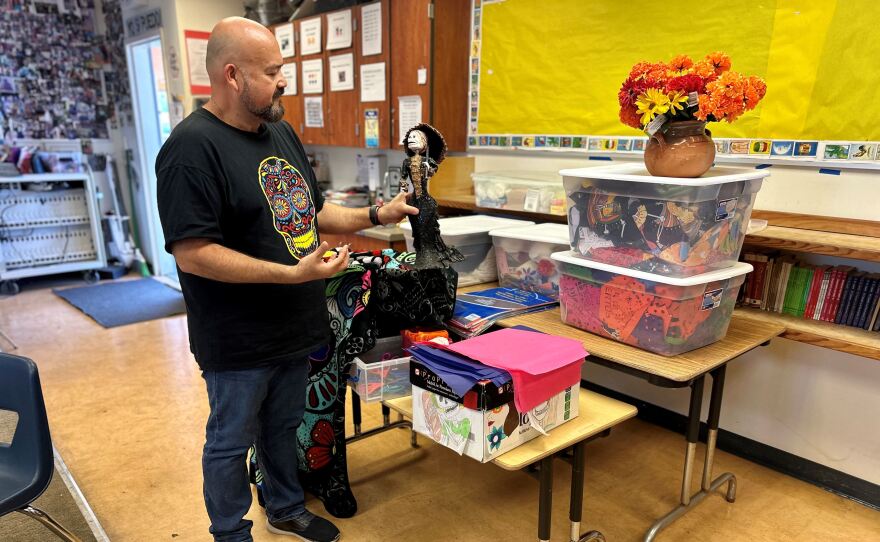Día de Muertos — or Day of the Dead — is a holiday tradition that began south of the border and has since grown into celebrations across the world.
At the Language Academy in the College Area, many students are immersed in learning the Spanish language and the culture.
More than 21 Spanish-speaking countries lead the celebrations internationally and honor their dead on the Nov. 2 holiday.

Linda Bojórquez teaches second grade at the Language Academy. Her class is learning about the altar called an ofrenda that welcomes happy memories of relatives who have passed away.
“'Don't be sad' is one of the things I tell my kids. It's not a time to be sad. It's a time to be joyful and remember our loved ones," Bojórquez said.
The Día de Muertos holiday is built on tradition and an altar. The ofrenda has three levels of love and legacy.
Her students are learning all the history.
Leo Zuniga, 7, said, “You put their favorite things that they like. If you put bread, the souls can eat it.”

“You put all the stuff that they like (on the ofrenda) at the bottom. Then, on the middle row you put pictures, and on the top row you put flowers," said Jedidiah Eckert, 7.
“The color of the flowers is very meaningful," said teacher Luis Altamirano. He has 25 years of experience teaching Spanish, he said, and embraces his Mexican heritage in his lessons. Altamirano explained the flowers are usually bright yellow and orange with powerful fragrances to attract the souls of the deceased.
The items on the altar in class are personal for him. They are especially dedicated to one particular relative.
“My cousin that died of cancer. He loved hamburgers. So, I try to bring a hamburger, wrap it, and keep it there (on the ofrenda)," he said.
Altamirano teaches over 100 middle school students at the Language Academy. They are building their own ofrenda over the next couple of weeks. The class altar will feature the iconic calaveras, which are skulls on often well-dressed skeletons.
“Nowadays with everything moving so fast. Sometimes we tend to forget," Altamirano said.
Students working on the holiday project have not forgotten. In fact, they have learned a lot about their heritage and history. Mia Ackerman, 8, is especially impressed by the incense.
“It was something they put on their altar to keep the bad spirits away so the good ones can be here without danger or problems," she said.

This year KPBS is hosting a digital community ofrenda where you can submit photos and memories of loved ones you've lost. Go to kpbs.org/dayofthedead to participate.







